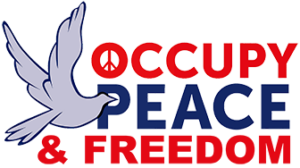|
|
With inflation at a 31-year high of 6.8 percent, last week the Bank of Canada (BoC) boosted its policy interest rate from 1 percent to 1.5, the second consecutive half-point hike.
The bank has not made consecutive half-point interest rate increases since late 2000.
Analysts expect another half-point move in July, the Wall Street Journal reported, but the bank’s rate-setting committee signaled that it may raise the rate by a larger amount next in its struggle to bring price increases to the bank’s target annual rate of 2 percent.
“The governing council is prepared to act more forcefully if needed to meet its commitment to achieve the 2-percent inflation target,” the BoC’s governing council said in a statement announcing the latest rate increase.
That statement “is an ominous hint that a three-quarter-point hike is now on the table for the next policy meeting in mid-July,” economist Paul Ashworth at Capital Economics said to the WSJ.
BoC officials think the “neutral rate”—the interest rate that stalls inflation and yet keeps the economy humming—is between 2 and 3 percent, the WSJ said.
Canada’s inflation pace will quicken in the near term before easing this year as supply chains loosen and China resumes shipping factory exports, the bank predicted.
Personal income in the country grew at one of the fastest rates in 40 years in recent months and the savings rate soared, giving households a deeper pocket to manage higher prices, economists told the WSJ.
Higher incomes and savings rates have been key factors driving inflation in the U.S. as well.
TRENDPOST: Inflation in Canada ran at 6.8 percent in May, a 31-year high, CBC News reported. Now, with the Ukraine war pushing inflation even faster, there will be more pressure on the country’s central bank to keep raising rates.
But as with other nations, the fear of Dragflation—declining economies and rising inflation—may well slow down the rate increases.
As a result, central bank interest rates will have little power to derail inflation. That job will fall to consumers, who will be unable to pay high prices and will curtail their spending, forcing miners, manufacturers, and retailers to adjust their costs and margins in response.

 العربية
العربية 简体中文
简体中文 Nederlands
Nederlands English
English Français
Français Deutsch
Deutsch עִבְרִית
עִבְרִית Italiano
Italiano 日本語
日本語 한국어
한국어 Latin
Latin Polski
Polski Português
Português Русский
Русский Español
Español ไทย
ไทย Türkçe
Türkçe Українська
Українська Tiếng Việt
Tiếng Việt

